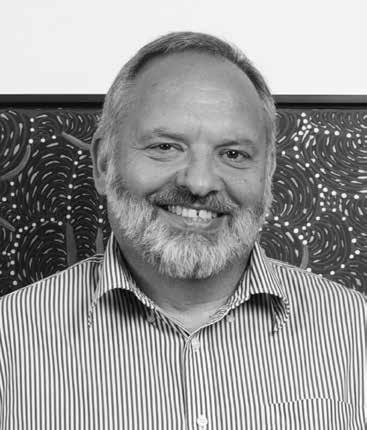
18 minute read
Inside: New Board members for SANTS
South Australian Native Title Services has recently undergone a major restructure due to funding constraints. Over the past 6 months the organisation reviewed its organisational structure to ensure a more efficient business model and to guarantee ongoing financial, legal and logistical assistance for native title groups. Keith Thomas, South Australian Native Title Services CEO said it has been a difficult time but is positive the organisation will continue to delivery its services well into the future. “We have made some tough decisions and implemented changes this financial year to ensure we are able to continue to fulfil our obligations under the Native Title Act to assist our clients to obtain and maintain their native title rights and interests.”
“We have a clear approach to our operations moving forward,” he said.
Advertisement
SANTS realigned its organisational structure to include three main areas; Legal, Corporate and Community Development and Business Services. “The new structure is designed to make sure all areas of expertise within SANTS is working together to fulfil our client’s needs.”
“We exist to support native title groups and we will continue to do this with all our capacity.” “On a more personal note, it was hard to see people who have been working with us for many years leave SANTS. I wish them all the best, and I hope their skills and experience gained whilst working here will assist them with their future endeavours,” he said.
New Board members for SANTS
SA Native Title Services is pleased to welcome two new Board members following the Annual General Meeting in November 2015. Lavene Ngatokorua joins the Board of SANTS as Deputy Chair and Damien Coulthard joins as a Director. Both bring valuable experiences and expertise to the organisation and the important work in native title services.
Lavene Ngatokoura
Deputy Chair Lavene Ngatokoura is Youth and Children’s Coordinator at Davenport Community and CEO of that community in a voluntary capacity. She’s a Wangkangurru, Adnyamathanha, Kwiani, Luritja woman from Davenport. Davenport is a proud Aboriginal community located 300km north of Adelaide. The community was known as Davenport Reserve before it formed its own Aboriginal community council in 1973. Ms Ngatokoura took on the demanding voluntary role of CEO after the community lost Government funding in 2014. “That was a really tough time, it went down from a staff of 20 to a staff of one, just you might say overnight,” Ms Ngatokorua said. “For two years though I sulked a bit, because I’m just the youth worker, but my job had to have Council backing and you need the administration running and so basically I helped with the community council, got them up and running.” Ms Ngatokoura has been involved in native title as a community member and observer, attending Consent Determinations for the Adnyamathanha people on country. She found the experience important and moving. “I like talking to the elders there, when you go back on country and you listen to the older people and how their stories go and what country means, and I just like going and seeing how the people are. And how passionate, you know. It just takes you to a whole new place, I can’t even describe it, it’s something personally that I feel and get to have a connection to. So mine is more so as being a young person watching it, taking things in and absorbing and being a part of that,” she said. Ms Ngatokoura is looking forward to contributing to native title work in South Australia through her involvement on the SANTS Board.
“I come with a freshness, I’ve been on the other side, I haven’t seen what – you hear about SANTS and what they do but they really have no idea what it entails until I get started. I believe I would give it a voice, from my own perspective and what I’ve been taught, which is what is the foundation that makes us, what do we learn from our elders, what do we learn from our teachers. I think that if I can bring that up and give a new, maybe some other options that people haven’t thought of I think that is what I would try and bring to being an active member on the board,” Ms Ngatokoura said.
Damien Coulthard
Director
Damien’s grandfather was Adnyamathanha and his grandmother Dieri; both were well respected elders in their communities. When speaking of his grandparents it is obvious that he held a great amount of respect for them both and loved them dearly. “My grandparents as well as my parents were and are the greatest role models I have. They were absolutely paramount as to why I became a teacher.” His role as a Physical Education Teacher at Le Fevre High School includes the position of South Australian Aboriginal Sports Training Academy Coordinator (SAASTA) and Sports Coordinator. The Academy delivers a Certificate III in Sport and Recreation as well as stage 1 and stage 2 in Integrated Learning. Damien strives to help his year 10–12 young Aboriginal students’ achieve their “My grandfather was very involved in the Adnyamathanha community, he used to go to meetings and I would hear him talk about the claim and what had gone on in the meeting. Back then I didn’t really know what it was all about but I know he was passionate about land rights and his community.” “I know this position will enable me to develop knowledge and understanding about the different rules and policies that have been put in place and why. I hope that working with Keith Thomas and the other Board members who are all like mentors that I can take all of the valuable information away and help my own community.” “I will be honest, I don’t necessarily love meetings but what I would like to do is develop strong relationships with members so they feel they can approach SANTS and discuss their story honestly without hesitation. I’m really excited about the opportunity and look forward to working with Keith and the Board in the future.”
aspirations in sport and employment and the program helps create both a passion for sport and learning. “My interest is in working with young Aboriginal students to complete SACE and to prepare students for life after school in further education or the work force. I also have a great passion for sport and enjoy working with young students to achieve their sporting aspirations.” Damien believes that the SAASTA program is a valuable learning tool for young Aboriginal students in South Australia. The program allows students to reconnect and strengthen ties with culture, community and family as well as giving students the opportunity to develop important knowledge and understanding in various career pathways. At the end of the 2015 school year Damien had the opportunity to attend the Port Adelaide Football Club and SAASTA Aboriginal AFL Academy trip to China. Those that were successful in their SACE participated in a cultural school exchange program with international students. They played in two exhibition matches against the Chinese representative side and the Hong Kong Dragons, promoting the game of AFL. The highlight for the 20 students was performing the team war cry on the great war of China.
“It was truly amazing to see our future Aboriginal leaders in that environment. There was such pride in everything the kids and team did whilst away.” Damien is most certainly enthusiastic about building communities which is one of the main reasons he has joined the SANTS Board.
“I really want to build relationships with community members so I can hear their needs and then act on it as a SANTS Director.”

Lavene Ngatokoura.
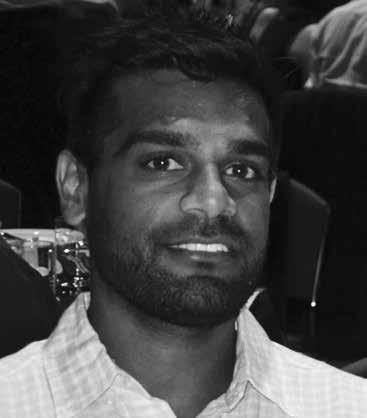
Damien Coulthard.
SANTS is recognised and funded as the Native Title Service Provider for South Australia by the Commonwealth Government under s.203FE(1) of the Native Title Act 1993 (Cth).
SANTS performs all of the functions of a representative body throughout South Australia. Those functions as set out in Section 203B of the Act are: • Facilitation and assistance; • Certification; • Dispute resolution; • Notification; • Agreement making; • Internal review; and • Other functions. SANTS provides a range of services to South Australia’s Aboriginal Nations who hold or may hold native title. These are delivered by a professional client services team.
SANTS provides legal representation and guidance, anthropological research and community liaison to support native title applications, negotiations and determinations. SANTS also provides services to Aboriginal Nations to enhance their capacity to achieve their aspirations. This includes natural and cultural resource management, community and organisational development, governance and training and economic development services. SANTS is committed to working with Aboriginal Nations to realise their aspirations which are often broader than the recognition of native title.
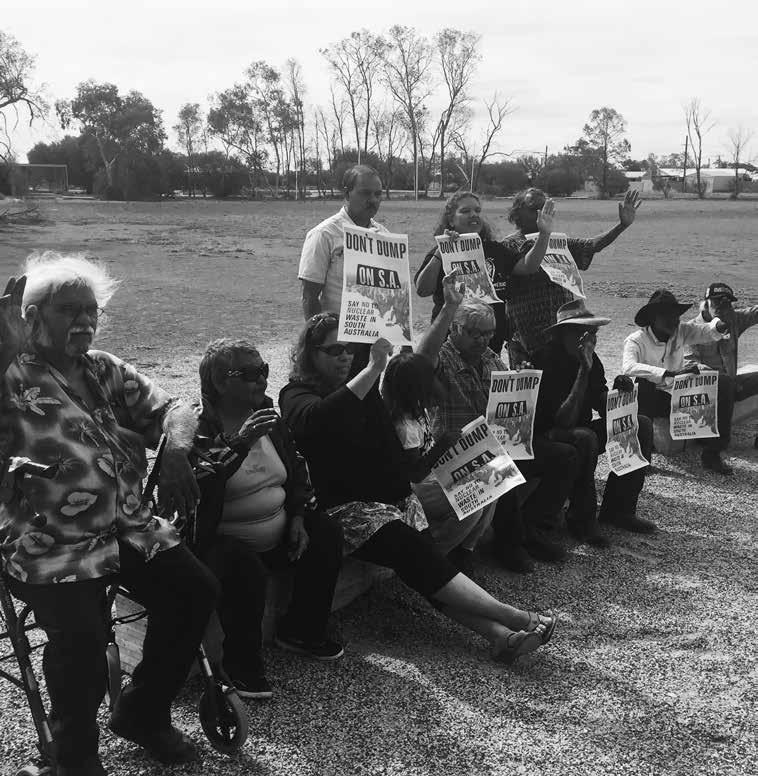
SANTS facilitates innovative pathways for our clients to achieve sustainable native title outcomes at the regional level.
Native title remains an important foundation for Aboriginal Nations to gain recognition and bring about positive and lasting change.
SANTS is committed to partnering with organisations that will assist in strengthening native title outcomes. SANTS is committed to achieving native title rights and interests through negotiation rather than litigation (where possible) and aims to assist in building positive relationships between Aboriginal Nations and the wider South Australian community. SANTS is a company limited by guarantee and is governed by a Board of Directors. The Board’s role is to guide and govern the running of SANTS to its full potential. The Board and Senior Management work closely to achieve a significant level of confidence and security for our clients and the future of SANTS.
Our Vision
Sustainable Aboriginal Nations.
Our Values
Across all our work at SANTS, we uphold the following values: • Respect – for people, culture, country, difference and ideas • Professional – being ethical, accountable and transparent and working with integrity and competence • Inclusive – encouraging collaboration and participation and listening to and considering the views of others SANTS receives funding from the Commonwealth and South Australian Government to perform its functions and to provide other services.
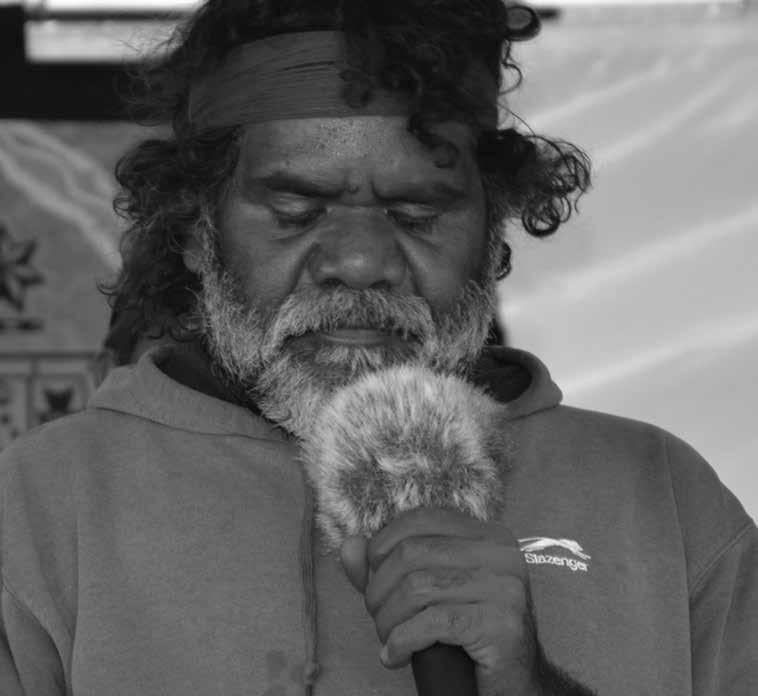
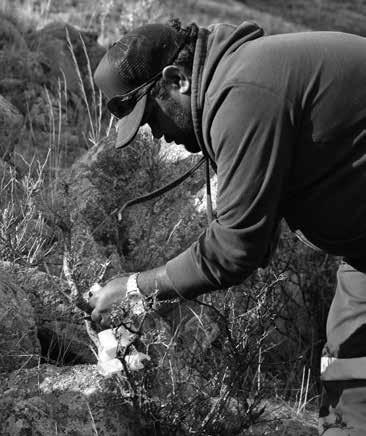
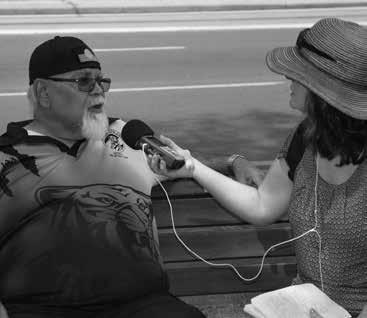
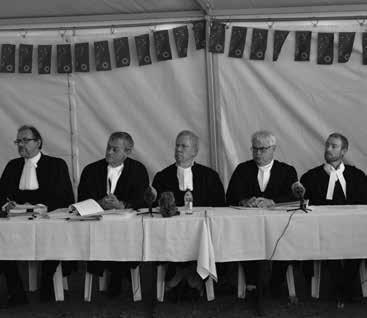
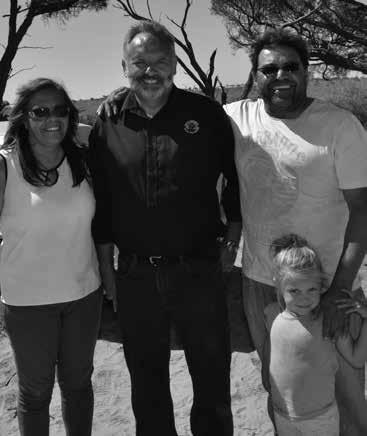
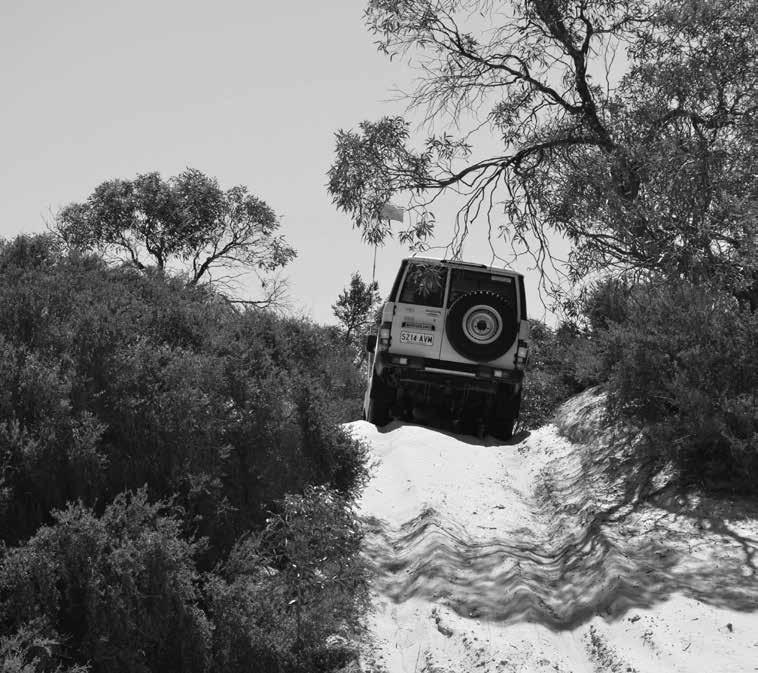
This page, from top (L–R): Wangki ‘Gavin’ Peel, Far West Coast; Directors of Yankunytjatjara Native Title Aboriginal Corporation; Jimmy Gepp Gawler Ranges Rock-hole Project; Bench at the Adnyamathanha Stage 2 and 3 Consent Determination at Wilpena Pound Station; Tauto Sansbury and Lucy Kingston at Invasion Day Rally 2016; Lesley Thomas, Keith Thomas, Michael Colbung and grandchild; SANTS Four Wheel Drive Training, Tailem Bend 2015.
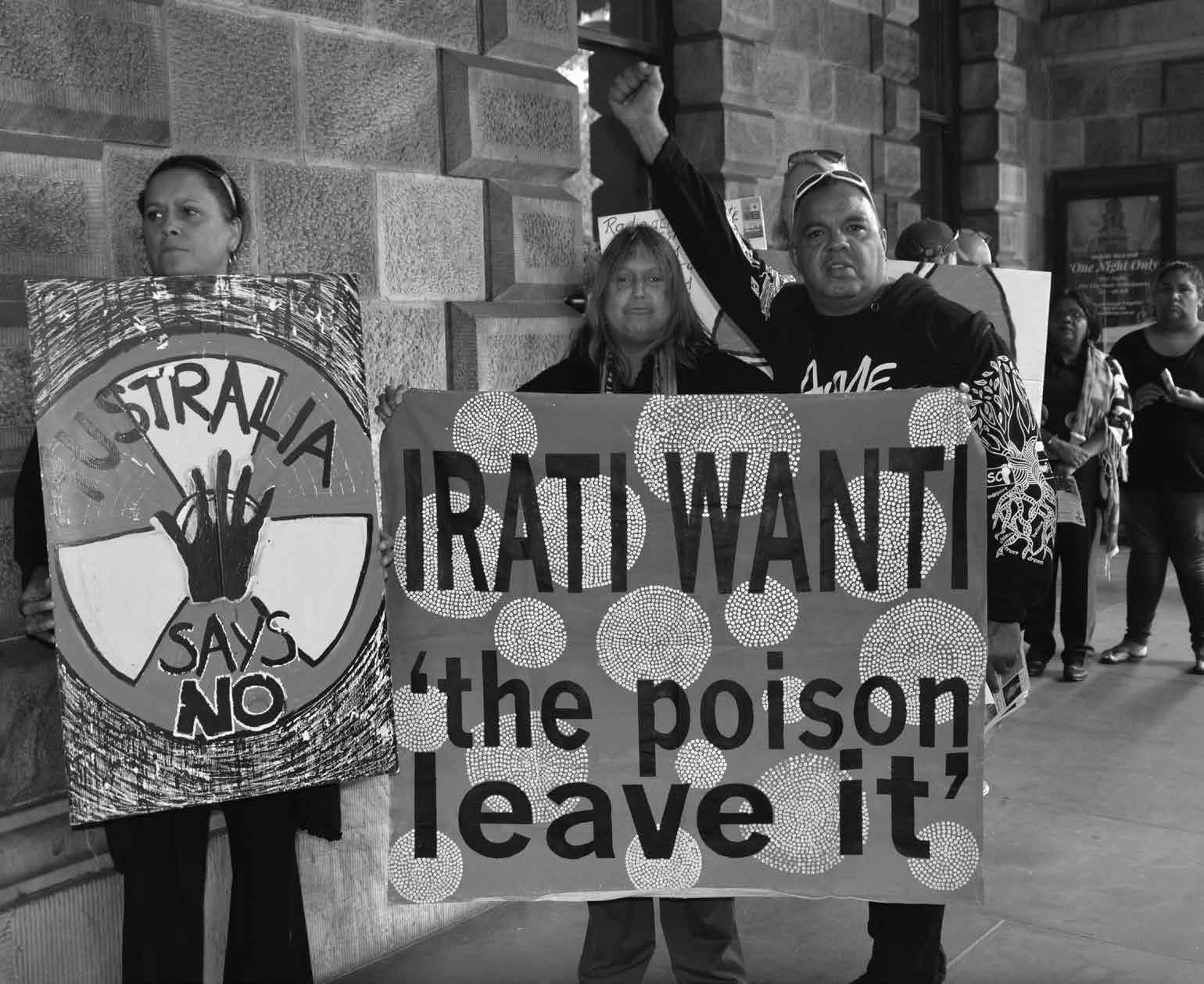
Representatives of Native Title holders across South Australia, drawn from the Aboriginal Congress of South Australia, will advise the Royal Commission into the Nuclear Fuel Cycle on further consultation with Aboriginal communities. The four delegates; John Reid, Tauto Sansbury, Michael Anderson and Karina Lester, were appointed at a meeting of the Aboriginal Congress held in Adelaide on 25 February. The Congress met to hear from Royal Commissioner Kevin Scarce about proposals to expand the state’s involvement in the nuclear fuel cycle. Commissioner Scarce presented the Congress with details of the Tentative Findings of the Royal Commission, which says that South Australia can safely increase its participation in nuclear activities and reap significant economic benefits. The storage of used nuclear fuel is reported to be the best option for the State, with the Findings suggesting a large storage facility could be operating in South Australia by the late 2020s. The Findings estimate a potential total $445 billion income from the facility. It proposes a State Wealth Fund be established to share the profits from the operation fairly in the community. The report has essentially ruled out the expansion of uranium mining, the further processing and manufacture of uranium and the possibility of a nuclear power plant for the state. The report emphasises the need for social and community consent before the nuclear expansion commences. Public meetings into the Tentative Findings began on 15 February with a meeting at the Adelaide Town Hall, and continued at various sites around the state.
Meetings were held in Port Pirie, Port Augusta, Whyalla, Port Lincoln, Mount Gambier, Oak Valley, Ceduna, Umuwa, Coober Pedy and Renmark. Ahead of the 25 February meeting Congress Chair Tauto Sansbury said that Aboriginal people should take time to understand the proposal. “I think the important message for Aboriginal people in South Australia is to fully understand the impact of what nuclear waste means to us and means to us on our country. You know there’s a lot of issues to discuss and we as traditional owners, native title owners, we should have a major say in this, whether we want it or not.” What the Nuclear Fuel Cycle Royal Commission said in its Tentative Findings
• SA can do more of the nuclear energy cycle and this can be done safely for the benefit of all South Australians.
• Communities must be able to decide if they want to be involved. • The South Australian and Commonwealth Parliaments both have to agree on this for anything to happen. • Talking to the community and helping people to understand everything they need to make a decision would be very important. • More mining of uranium is not the biggest opportunity in the nuclear energy cycle. • Making the fuel for nuclear reactors on its own would be difficult. • If you make the nuclear reactor fuel and then take it back after it has been used, that might work better. This is called fuel leasing. • Right now nuclear energy is too expensive to be used in South Australia. • Disposing of used nuclear fuel by putting it in the ground safely can benefit all South Australians, both now and for future generation.
Source: Royal Commission Key Tentative Findings, Anangu translation
Mr Sansbury also emphasised that at the previous meeting of the Aboriginal Congress there were strong opinions against an expansion of nuclear activity. “In our last meeting with Commissioner Scarce, all Native Title groups except one said “we vote against it” and you know that should have been a decision that “well we won’t be able to go near any Aboriginal land because they’ve all voted against it.” So whether that is going to be accepted as community consent or no consent from the Aboriginal people is another thing for Scarce and the
Weatherill Government to consider and maybe seriously sit down and talk and negotiate with us a lot better than they’re doing at this present moment.” Addressing the Congress, Commissioner Scarce explained that the Commission had spoken to Aboriginal people in consultation visits across the state leading up to the report release. Those consultations are covered in the Tentative Findings in the section on Social and Community Consent. “What we’re trying to understand in this document is what’s happened in the past, so that it’s not repeated in the future. There are sections which talk about what’s happened in the past, and if we were to proceed, talk about a way, what sort of actions would be necessary to have a proper engagement,” he told the meeting. Michael Anderson, Chair of Adnyamathanha Traditional Lands Corporation explained at the meeting that he would put any relevant proposals relating to the Commission’s Findings to his community for discussion and decision. “Our people are prepared to look at all propositions they come across, whether that be the nuclear waste or whatever, and they’ll make the assessment,” Mr Anderson said. Following the Commissioner’s report to Congress, John Reid from the Gawler Ranges Aboriginal Corporation asked about how much the Commission had considered water security in making its recommendations.
“One of the things that I haven’t seen too much of in this document is modelling on water security…there is not a lot of modelling of how the water resources are going to be used in these types of activities and the big issue for a lot of Aboriginal people is water security,” Mr Reid said. “We took a lot of advice regarding the management of water, particularly the importance of safe guarding the resources we have and therefore that figures prominently in our thinking about a storage facility,” the Commissioner responded. Karina Lester, Chair of Yankunytjatjara Native Title Corporation asked the Commissioner how community and social consent would be measured. Reasons for caution about the Royal Commission’s ideas
• The nuclear waste disposal plan would mean that both a shorter term storage site to operate for up to one hundred years and a longer term disposal site at a different location in SA would be built.
• The plan is bigger than has ever been built before and no county has yet delivered on disposal of high level nuclear wastes. • Being prepared for the first nuclear waste shipment imposes vast liabilities on South Australia.
• It would need a potential dedicated nuclear waste deep sea port to be built, probably south of Whyalla. • Costs are estimated at $145 billion before any profit and costs may go up, in other countries cost estimates have risen by 50 percent. • Transport of waste and shorter term storage poses serious risks to the
SA community. • The shorter term nuclear waste storage site would open 11 years after any decision to go ahead. • The proposed waste disposal site would open around 28 years after any decision to go ahead. • The storage site would be closed down in 120 years’ time, and then require hundreds of years of monitoring. • The Federal government holds many key powers and responsibilities for national approvals – it’s not just up to the SA Government.
Source: Anti-nuclear campaigner, David Noonan
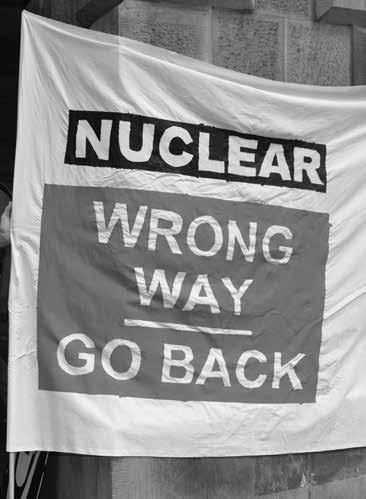

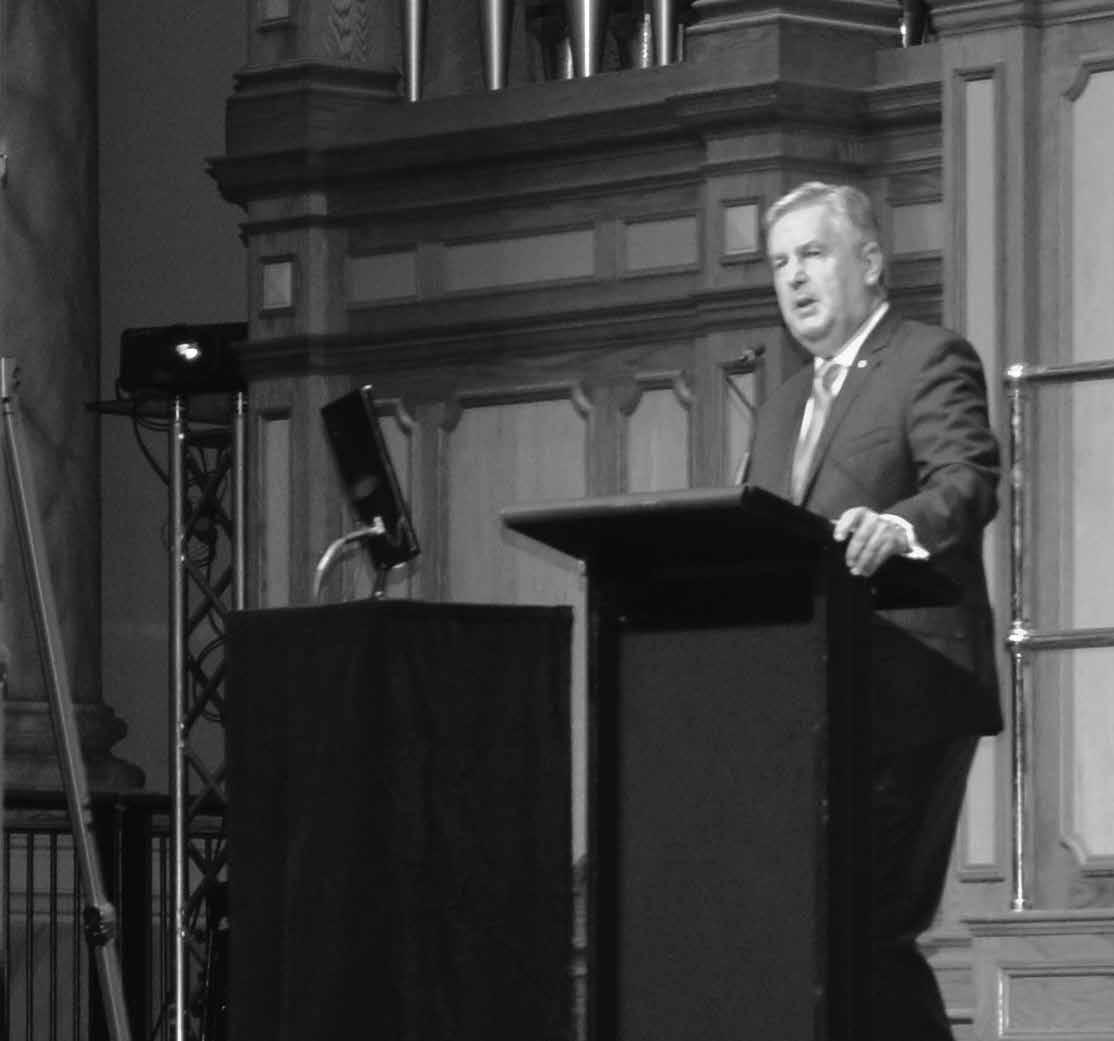
Opposite page: Left to right: Tanya Hunter, Rose Lester, Pascoe Braun at the Adelaide Town Hall on 15 February. Above: Commissioner Kevin Scarce addressed a public meeting at the Adelaide Town Hall on 15 February. The Commissioner responded by explaining how he sees that social and community consent differ and how principles and a process could be established. “Well what we’ve tried to do is mirror what’s been successful overseas. In the end it will be a political decision, social consent. So what we’ll do is prepare a final report, which I’ll advocate be made public quickly. In that report we’ll identify what we think are the central principles behind social consent. Really these are the sorts of principles that need to be considered, governments will decide how they’ll get the social consent they need.” Once the government has determined it has social consent, community consent would be a more detailed, locally based process, the Commissioner explained. “In terms of community consent… I envisage something similar to what I saw in Canada, where we have a process of engaging those communities right at the start, funding the community to make independent reviews, plenty of time to make decisions, plenty of review steps. All of that based on what we’ve seen around the world to indicate here’s a process that works, the community in the end have a say – yes or no, if it’s no, that’s the end of the process.” “I do think, where it’s failed overseas, it’s because these two processes, social consent and community consent have failed and it’s not the technical issues that have been the undoing of these issues, it’s the failure to get community consent,” Commissioner Scarce stated.
Elliott McNamara, Chairperson of the Barngarla Aboriginal Corporation expressed concern about how consent would work for some Aboriginal people and communities. “The issue I have, it’s like the city versus the country. Everybody repeats the words ‘not in my backyard’ but the majority of people live in the cities. Country people and Aboriginal people are already the minority voices in any census. Which makes Aboriginal people a minority voice within a minority. It’s alright for you to say that we take everyone and everything into consideration, but realistically we Aboriginal people don’t matter. You just need to look at history to see that,” Mr McNamara said.
“We may have a responsibility to store our own nuclear waste in SA. But why then should we be responsible for every state. Shouldn’t they take responsibility for storing their own waste? And definitely why should we become the dumping ground for the world’s nuclear waste,” he said.
It’s not put back on us, it’s an opportunity we can take up” the Commissioner responded.
Following the discussion with the Royal Commission, anti-nuclear campaigner David Noonan presented his perspective to Congress.
He explained that the nuclear waste disposal facility proposed by the Royal Commission was of an unprecedented scale internationally and would involve considerable risk and investment by the State.
The final report of the Royal Commission will be handed to the Premier in May 2016.
For further information, head to the Commission website at http://nuclearrc.sa.gov.au


